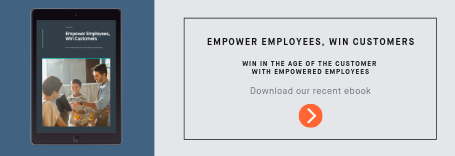My philosophy is that every department has one objective: develop customer satisfaction by meeting customer needs. Everything else – operations, marketing, finance – should be organized around this principle.
For most companies, this is easy to say but hard to achieve. Most are not organized around a single objective. Departments are siloed, information is unevenly shared, compensation structures aren’t always aligned with the overall mission. When I became president and CEO of SAS airlines in 1980, our reputation among the flying public was less than stellar and our finances were under pressure. We were known for often being late, a form of disrespect for our flyers. Our organization was highly centralized, making it hard for front-line employees to respond quickly to our customers. We were losing money.
This had to change if we were going to survive. To focus the organization on what mattered most, I communicated a very tight brief for the company: win the frequent business customer. To achieve this, we set the goal of being the best in customer satisfaction. We told all our employees, “We used to fly airplanes and we did that damn well, now we have to learn how to fly people.” To be the best, everyone needed to understand that the only value any organization has is a satisfied customer.
But words are just words. Empowering employees is how a customer-centric strategy comes to life. An individual without information cannot take responsibility; an individual who is given information cannot help but take responsibility. But to make this work, you can’t just give employees the power to act and step away. You have to measure the success of the program you design and use the data to provide honest feedback and ways to improve. One principle we applied across the organization: it’s preferable to be one percent better in 100 details than 100 percent better in one detail.
This search for improvement led us to focus more closely on the business traveler and to institute a program that empowered customer-facing employees to make decisions on the spot. We improved our on-time performance, becoming the most punctual airline in Europe. Most importantly, within one year, we turned a profit thanks to the hard work of all our team members.
What we were addressing then is now known as the “customer experience (CX)” and many organizations are moving to put this at the center of their mission. In today’s world, the way businesses talk to customers has changed – things have gone digital – but the principles still apply. Done properly, the application of these new CX techniques can significantly enhance customer interaction by providing a better understanding of customer needs and higher levels of personalization.
I left SAS in 1993 but have remained committed to the customer experience message. I love it when I see it properly done. Zappos proving their customer-centric strategy by encouraging customer service staff to spend MORE time talking to customers on the phone is an inspiring example.
Another example is Nepa, which is leading the way in delivering research insights into what matters most for customers. Nepa’s alignment with my management philosophy led me to invest in the company and join the Board of Directors last year.
###
A word about Jan Carlzon
Carlzon served as CEO of SAS Airlines from 1981 to 1994. He is the author of Moments of Truth, a look at the 15 seconds of employee interaction that define how a customer sees a company. The book has been translated into 22 languages and has been a global bestseller for 34 years.


